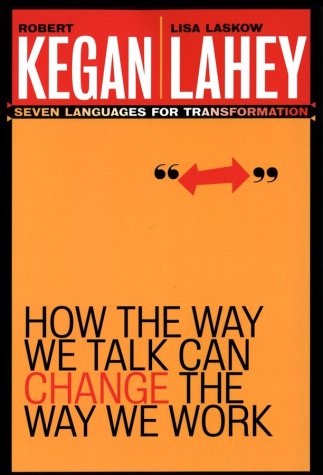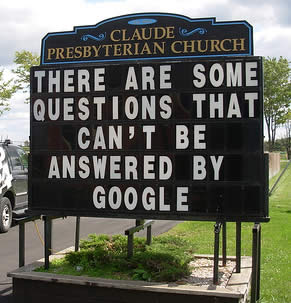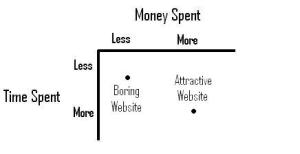My 9 Minute Video to Church Leaders for 9/9/09
Today is September 9th, 2009 and leadnet.org is doing a great all day online conference for church leaders. They asked these globally recognized leaders the following question: “If you had 9 minutes to address thousands of church leaders what is the one issue you would want to impart to them.”
Well, I’m not a globally recognized church leader, and thousands of people won’t be watching my video, but I felt inspired to share my own thoughts. Some of it is based on my previous post about Making Disciple-Making Disciples, but it is from a passion to see us accomplish the mission Jesus set out for us to do.
The question I’m asking in my video is: “Are you as a church leader involved in making disciples?”
Please pass this video on to other church leaders if you find it helpful.
Social Languages for Transformation
 In my last post I began a book review of How the Way We Talk Can Change the Way We Work by Kegan and Lahey. What an incredible book about transformation, leadership, and interpersonal relationships. This book has important implications for church leaders, which is why I decided to review it here at ChurchETHOS. Our churches are often slaves to bad habits and destructive tradition and if you’ve ever wanted to change things, this is the book you need.
In my last post I began a book review of How the Way We Talk Can Change the Way We Work by Kegan and Lahey. What an incredible book about transformation, leadership, and interpersonal relationships. This book has important implications for church leaders, which is why I decided to review it here at ChurchETHOS. Our churches are often slaves to bad habits and destructive tradition and if you’ve ever wanted to change things, this is the book you need.
Internal Languages for Transformation was the first post in this series and it described the languages that help us move from complaint to commitment, from blame to responsibility, from resolutions to competing commitments, and from Big Assumptions to assumptions we hold. Ultimately, the goal is to discover what you are commited to that needs changing, accept responsibility for that change and discover the road blocks that are keeping you from the change that is necessary. The book is written by educators and they are great at making this not just an easy read but a workshop where you can sound out your own complaints and turn them into commitments.
This post will focus on the final three languages: the social languages. These languages are external. They help you work with others to bring about change in a group or a company or a church (in our case). I’m looking forward to hearing your thoughts about these languages.
THE SOCIAL LANGUAGES:
From the Language of Prizes and Praising to the Language of Ongoing Regard
The authors write, “We all do better at work if we regularly have the experience that what we do matters, that it is valuable, and that our presence makes a difference to others.” Nowhere is that more necessary than in the church. As leaders in the church, we look to God to ensure we are glorifying Him and advancing His Kingdom. However, we need feedback from others too.
It’s easy to praise someone publicly. “Great job!” “You’re a value to this team!” “Let’s give Fred a round of applause for his contribution!” Those sorts of praises feel good, but they have a tendency to puff us up. Instead, the author’s encourage the language of ongoing regard. They want you to genuinely experience the value of a coworker’s behavior and then share with them why their behavior meant so much to you.
Be Direct – Don’t express your appreciation to others about someone, deliver it directly to the person.
Be Specific – “Thanks for all your hard work” isn’t enough. What was the hard work? What aspect of their role in the job was of particular note? Really be specific about what the person did to make a valuable contribution.
Be Nonattributive – Rather than characterize the person’s attributes (generosity, patience, persuasiveness), describe your experience (you learned something, you gained something, etc.). An example might be: Rather than, “Alan, I appreciate what a generous person you are.” Try, “Alan, I appreciate the way you took all that time to fill me in on what I missed. It made a real difference to me.”
When we praise people publicly it can also have some negative effects. The others in the room might be jealous. The person being praised might become prideful. Everyone might begin working for the approval of men rather than for God.
When we speak the language of ongoing regard it is an encouragement to people. It’s direct and meaninful. You are able to share with the person exactly what they did that was of value and prompts them to do more of it. Finally, ongoing regard tells the person that they are valuable to the company, mission, church, etc.
From the Language of Rules and Policies to the Language of Public Agreement
Rules and policies are to be kept and followed. Public agreement means that everyone is committed to the same thing. The language of public agreement is basically harkening back to the first language of moving from complaint to commitment. This language gets a group to discover what we are all committed to, together.
This language is not committed to a top down approach to leadership. Instead, it is “intended to create organizational integrity…from within.” In other words, it’s hard to change rules and policies that were drafted in the 50’s, but when you learn what we all agree on and then come to public agreement, when we break those we are letting ourselves down.
From the Language of Constructive Criticism to the Language of Deconstructive Criticism
The authors intentionally chose the subject of conflict for the final language. Up to this point, we’ve learned how to adopt internal languages that help us change our own behavior. We’ve also learned ways of leading group change through the language of ongoing regard and public agreement. But there are times when you need to confront someone head on.
The language of constructive criticism is common (maybe you could try improving your speaking skills), the language of destructive criticism is even more common (that sermon was irrelevant and boring). A third option is deconstructive criticism.
The problem with constructive criticism is that there is often a lack of confronting the real issue. Deconstructive criticism chooses to disassemble bad habits or behavior and help the person to reconstruct a positive habit or behavior. However, the object of attention doesn’t start with the other person’s behavior it begins with our own evaluation of that behavior.
The authors explain this language best: “The language of deconstructive criticism is about holding two simultaneous realities together: I respect myself to the extent of taking seriously that I have formed a negative evaluation, and I respect the other as an independent constructor of reality who might have quite a different picture of what is happening, a picture based on premises and assumptions that might usefully inform my own.”
Conclusion
“It must be remembered that we exercise all the languages for the purpose of making our work settings richer contexts for learning. The kinds of change we are looking for are transformational. They go to the roots. They are not about fixes at the surface.”
My hope is that as we learn how to bring about change in our ministry contexts that we will, as a result, form more meaningful relationships with people and that we will begin the process of change by thinking how we might change before considering what we should do about others.
First Post in Series: Internal Languages for Transformation :: Subscribe :: Why Subscribe?
Internal Languages for Transformation
 “If we want deeper understanding of the prospect of change, we must pay closer attention to our own powerful inclinations not to change.” Kegan & Lahey
“If we want deeper understanding of the prospect of change, we must pay closer attention to our own powerful inclinations not to change.” Kegan & Lahey
I’ve mentioned before that ChurchETHOS encourages thinking Christianly about the habits and customs of the church and about our reputation with those outside the church. This review of Kegan & Lahey’s book on leadership entitled How the Way We Talk Can Change the Way We Work: Seven Languages for Transformation, is an important book as we talk about how to change the bad habits that are often formed in the church.
Why is this book important for church leaders?
Have you ever wanted to do something but for some reason you never do it? Can you think of something that your church does that you wish were different? Or, is there some habit that you wish you could break but you just never get around to doing anything about it? This book by Robert Kegan and Lisa Lahey was assigned to me in a graduate level class that I took at Harvard Divinity School and I don’t know if there is a more important non-religious book for the church today.
The use of this book in the church grants us multi-faceted insight from several different perspectives. For example, both Kegan and Lahey work at the Harvard Graduate School of Education but their book is about leadership and business management. If that weren’t enough I’m reviewing it here in light of church leadership and personal transformation. From the world of education, business, and church leadership, this book has significant contributions to make in the way we change our organizations for the better.
The authors have written this book “for people interested in the possibility of their own transformational learning, as well as for people interested in supporting the transformational learning of others. Their theory is that we are all leaders so these “languages for transformation” are readily applicable whether you are a business owner, a church planter, an education minister, or a parent.
In this post, I will briefly outline the first four languages, referred to in the book as “Internal Languages”. In a follow up post I will describe the “Social Languages”. The first four languages are meant to be an exercise in personal transformation. These are the internal languages. The last three languages are meant to be an exercise in bringing about transformation in a culture or a group. These are the social languages. So let’s get started with the internal languages.
THE INTERNAL LANGUAGES:
From the Language of Complaint to the Language of Commitment
“I wish our church spent more time together!”
The author’s write, “The language of complaining, wishing, and hoping is a highly frequented conversational form, but it is assuredly not one of our seven languages for personal learning and reflective leadership.” However, “we would not complain about anything if we did not care about something.” That is an important statement. The authors do a great job of helping you dig deep to the commitment that ‘s behind the complaint.
To help us change from the language of complaint to the language of commitment, the author’s suggest completing this sentence: “I am committed to the value or importance of…”
The answer might be “…God’s love being displayed through each of us as we fellowship with and care for one another.”
Complaining accomplishes nothing, but commitments put us on the path to internal transformation. Later we will see how it can even change others as well. When we analyze our complaints from the angle of the underlying commitment we move from being disappointed in the circumstances to recognizing that we are deeply committed individuals.
From the Language of Blame to the Language of Personal Responsibility
When we complain, we are primarily focusing our frustration at other people. Now that we’ve moved from complaint to commitment we recognize our commitment to fellowship might, in some small or large part be our responsibility as well. This language helps you discover what role you might play in keeping your commitment from becoming a reality.
A great question to ask at this point is, “What are you doing, or not doing, that is keeping your commitment from being more fully realized?”
You might answer, “I have a difficult time sharing my personal needs, struggles, or hopes with other people, so I tend to stay at surface level with my friends at church” or, “I tend to procrastinate throughout the week and then when church members call me up I don’t have any time for them.”
The potential in the language of personal responsibility is that it draws on the momentum from the language of commitment. Rather than blaming others for what should be, you realize that with some personal responsibility it could be, at least as far as it concerns you.
It should also be pointed out that this doesn’t remove blame from others. At this point, it is enough to work on your own commitments. A couple of quotes (not in the book) that are helpful would be from Tolstoy, who said,”Everyone thinks of changing the world, but no one thinks of changing himself.” Gandhi said, “Be the change you want to see in the world.” Remember, we are focusing on internal languages, not social languages, so far.
From the Language of New Year’s Resolutions to the Language of Competing Commitments
This language is intended to help diagnose our own immunity to change. We know how powerful a New Year’s resolution is, right? Wrong. New Year’s resolutions are mere wishes and hopes. Without understanding what is holding us back from keeping our commitments, we will never see transformation in our lives.
The first language was easy. Anyone will confess that they value time spent with others. This third language will be harder because it helps you find the raw truth about what’s keeping you personally from changing.
Keeping in mind your original commitment of safety and courtesy, complete this sentence, “But I may also be committed to…”
“…not being seen as needy or dependent on other people.”
This language is powerful because it “paradoxically increases the possibility of significant change by making clear the immune system that makes change so difficult.” The ability to see the system that is keeping us from change is powerful, but simply looking at it won’t change much. We have to actually do something about it, which leads us to the fourth language.
From the Language of Big Assumptions That Hold Us to the Language of Assumptions We Hold
To the authors, a “big assumption” is an assumption that we take as absolute truth. Assumptions could be true or could be false but “big assumptions” are not questioned, we believe them to be, and act like they are, the truth. These “are not so much the assumptions we have as they are the assumptions that have us.”
The authors write, “You have probably met or worked with people whom you see operating dysfunctionally, destructively, or self-destructively. We are suggesting that if you could accurately discern the Big Assumptions under which these people are operating…you might even say, “If I held those same Big Assumptions, I might very well be acting in just these destructive ways myself.” We all have Big Assumptions that have power over us. The first three languages are helping to expose this Big Assumption but there is still some work to do.
The problem with a Big Assumption is that once we figure out how the world should work, it doesn’t make any sense to us to look for anything different. We are certain we are right and those who don’t think that way are wrong.
So, how does this work with our example. The authors guide the reader to take the third language and change it to the following: “I assume that if…then…”
“I assume that if I am seen as needy or dependent on other people, then people won’t want to spend time with me. As much as I want fellowship with other believers, I would probably be kept out of the loop while other people experience Christian community together without me.”
The Big Assumption ties all four of the languages together. The commitment to fellowship is being held up by our own procrastination or inability to share our lives with others. Further, we have a competing commitment that we don’t want to come across as needy and are assuming that if people perceive that we are needy then we won’t achieve authentic fellowship which is our original commitment.
The Big Assumptions are produced unintentionally, but the “Assumptions that we hold” are produced with great difficulty. It requires opening up with someone to let them see your Big Assumption and letting them work with you to change your thinking and behavior. Once you’ve worked through it, though, you gain mastery over your assumptions and begin taking them for what they really are: assumptions. The Big Assumption “anchors and sustains our immune system [to change]” but the “assumptions that we hold…creates a pivotal lever for disturbing our immunity to change. By beginning to “speak” this fourth language we begin to gain new perspective on our world and we are able to change our destructive behavior and begin realizing our healthy commitments.
Now What?
The more we practice these languages, the more transformed we become and the people around us become. But there are three more languages that deal specifically with helping others change. Make sure you check out the next post in this series: Social Languages for Transformation.
Meanwhile, use these languages to discover your own Big Assumptions. Do you mind sharing them with us? Once you get it out in the open it will be easier for you to work on them. Feel free to walk us through all four languages. What are you committed to? In what ways are you responsible for that not happening? What competing commitments do you hold? What is your Big Assumption?
Next Post: Social Languages for Transformation :: Subscribe :: Why Subscribe?
















2 comments